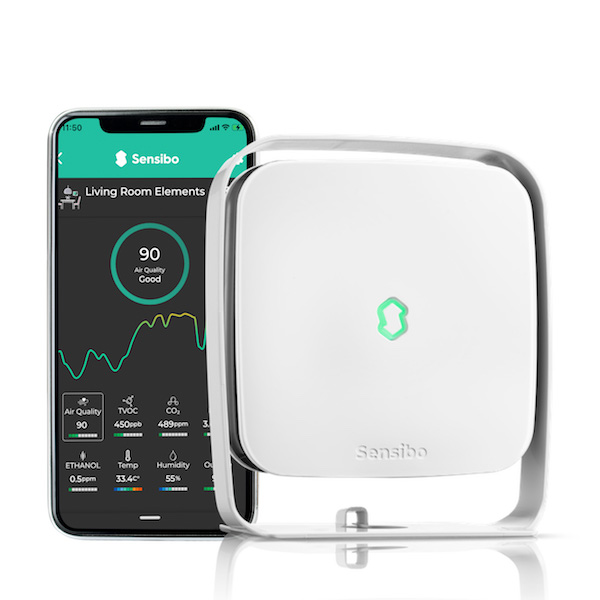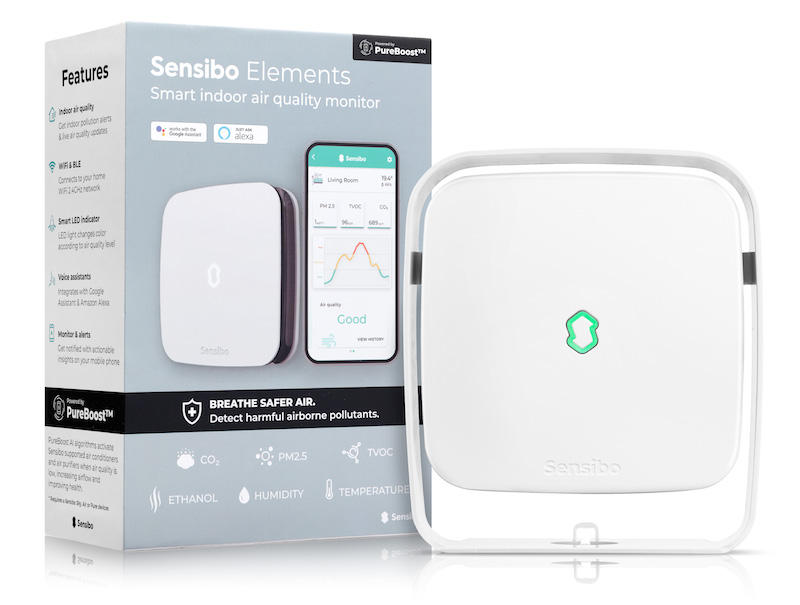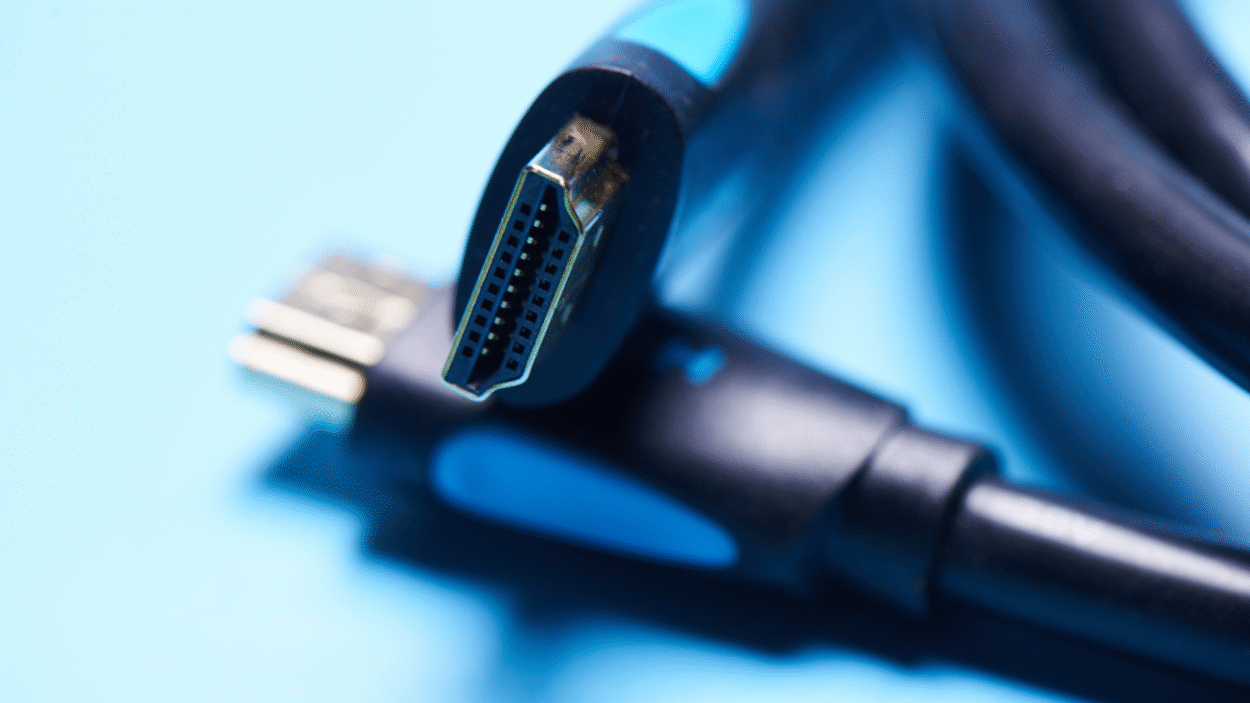Sensibo Elements is the company’s first product that allows a homeowner to monitor the major indoor air pollutants (with the exception of Radon) that impact residential properties, along with temperature and humidity
Today, poor indoor air quality (IAQ) is recognized as a significant health hazard. Whereas older homes were poorly insulated and drafty, modern, energy efficient homes are designed to leak as little air as possible. Better insulated doors and windows, construction wraps (such as Tyvek), and spray foam insulation have all contributed to more energy efficient homes, but also issues with IAQ. In fact, according to the Environmental Protection Agency (EPA), the air in a home can be two to five times more polluted than the air outside and research has shown that people spend up to 90% of their time indoors, which exacerbates the problem.

There are three approaches to managing indoor air quality: controlling the source of pollution, improving ventilation in a home, and the use of air cleaners to remove pollutants from the air.
However, before a strategy can be developed to address specific IAQ issues in a home, a homeowner needs to understand what specific IAQ issues exist in their home. An indoor air quality monitor is a valuable tool to understand the IAQ issues in a home.
Sensibo Elements
The Sensibo Elements IAQ monitor isn’t Sensibo’s first product related to managing the environment in a home. Sensibo offers:
- Sensibo Sky and Sensibo Air – These products manage window and mini-split air conditioning systems. (An article I wrote about the Sensibo Sky and Air can be found here)
- Sensibo Air Pro – Like the Sensibo Sky and Sensibo Air, the Air Pro manages window and mini-split air conditioning systems. In addition, it includes the ability to monitor carbon dioxide levels, total volatile organic compound levels, temperature, and humidity.
- Sensibo Pure – A smart air purifier. (An article I wrote about the Sensibo Pure can be found here)
That being said, the Sensibo Elements is the company’s first product that allows a homeowner to monitor the major indoor air pollutants (with the exception of Radon) that impact residential properties, along with temperature and humidity. The Sensibo Elements can monitor the following indoor air pollutants:
- Carbon Dioxide, which can cause headaches, fatigue, and a loss of focus.
- Total Volatile Organic Compounds (TVOCs), which can cause unpleasant odors, skin irritation, nausea, and dizziness.
- PM2.5, which are inhalable particles that are 2.5 micrometers, and smaller, including dust, pollen, and smoke. These can cause irritation of the eyes, nose, and throat, coughing, and sneezing. Long-term exposure to PM2.5 particulates can cause chronic bronchitis, lung disease, and heart disease.
- Ethanol, which can be found in mouthwash, mints, ripe fruits, and other household products. Exposure to Ethanol can cause respiratory irritation
Physically the Sensibo Elements is approximately 4-1/2 inches square and a little over 1-inch thick. It can be mounted on a wall, laid on a table, or held vertically on the included plastic stand. It should be noted, that the Sensibo Elements requires AC power, so if the device is wall mounted there will be a power cord hanging down beneath it.
The only built-in user interface on the device is a color-changing LED indicator. The indicator will change color (green, yellow, orange, red) depending on the air quality measured by the device.
The full feature set of the Sensibo Elements can be found in the Sensibo App. Both iOS and Android versions of the app are available for download from the appropriate app store.
Integration
The ability to integrate an IAQ monitor with an overall smart home is very important. First, Sensibo PureBoost integrates the Sensibo Elements directly with Sensibo’s other products. When pollution is high and an alert is activated on the Sensibo Elements, PureBoost will activate Sensibo Pure (HEPA filter equipped smart air purifier) high fan to fight pollution. Combined with Sensibo’s AC controllers, Sensibo Sky and Sensibo Air, the AC will also be activated to help circulate air through the purifier to quickly decrease pollution.
Sensibo also has an open API on GitHub. The API can be used, for example, to emulate the functionality of Sensibo’s PureBoost with non-Sensibo air purifiers and a third-party smart thermostat.
I’ve written a Crestron driver for the Sensibo Elements that can be downloaded from my GitHub here. This new driver joins the Crestron-Sensibo drivers that I’ve already written for the Sensibo Pure and Sensibo Air that are also available for free download from my GitHub.
Finally, Sensibo also supports integration with Google Assistant, Alexa, Siri and Apple HomeKit.

Hands on with the Sensibo Elements
Opening the box that the Sensibo Elements was packaged in was a welcome surprise. There were no plastic inserts or other packaging that couldn’t be recycled — just a cardboard box and two plastic bags containing the power supply and USB cable. Sensibo didn’t even include a Getting Started instruction booklet. Those instructions are simply printed on the box.
The first step to start using the Sensibo Elements is to install the Sensibo App on your smart phone or tablet, choose to add a new device, and select Sensibo Elements from the list of Sensibo devices. Next, plug in the Sensibo Elements, wait for the indicator light to blink green, and scan the QR code on the back of the unit. Next, enter a location and room for your Sensibo Elements or choose them from the lists displayed if you already have other Sensibo devices. Your smart phone will then connect to the Sensibo Elements over Bluetooth.
Next, you connect the Sensibo Elements to your home’s Wi-Fi network by selecting your network from the list of available networks and entering your Wi-Fi password. At this point, the Sensibo Elements will download any available firmware updates and you are ready to start using it.
All the air quality data collected by the Sensibo Elements is displayed in the app. Displayed is an overall air quality score, the measurement value from each sensor in the Sensibo Elements (TVOC, CO2, PM 2.5, etc.), and a bar graph for each sensor that indicated whether the measured value is good, moderate, poor, etc. In addition, for each measurement, there is the ability to “explore” and look at detailed information about the sources of that IAQ issue, side-effects, and suggested actions if the measured value isn’t in the “good” range. Finally, for each measured value you can view graphs showing measurements over time.
Other options that are available in the app are the ability to switch between Celsius and Fahrenheit, the ability to turn the indicator LED on/off, and the ability to share the Sensibo Elements with other people so they can also view the IAQ data.
There is one thing I would like Sensibo to have done differently. The indicator light on the unit glows green, yellow, orange, or red depending on the overall IAQ. Any time the indicator is glowing any color but green, you are going to want to pull out your smart phone and open up the Sensibo app to find out what the issue is. It would have been much better if Sensibo had included indicator lights for each sensor so a user could understand, at a glance, the specific air quality issues in their home.
Overall, the Sensibo Elements is an easy-to-use IAQ monitor. It provides measurements of all the different IAQ pollutants that a homeowner would want to monitor on a daily basis. Direct integration with the Sensibo’s other products, including the Sensibo Pure, simplifies the process of managing IAQ in a home.








